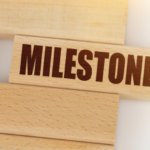 CHICAGO—The ingredients required to make a rheumatologist have changed from the early years of the last century to now and are moving toward further transformation in the millennial-influenced future, according to Calvin Brown, MD, keynote speaker at the ACR’s 2019 Program Directors Conference.
CHICAGO—The ingredients required to make a rheumatologist have changed from the early years of the last century to now and are moving toward further transformation in the millennial-influenced future, according to Calvin Brown, MD, keynote speaker at the ACR’s 2019 Program Directors Conference.
Dr. Brown, who trains medical students at Northwestern University Feinberg School of Medicine in Chicago, began his presentation with a nod to his grandfather, an ophthalmologist in the 1940s, who during his medical career, became chief of staff of Detroit’s most prominent hospital at the time. The first revolution in medical education was brewing around 1910 when his grandfather, A.O. Brown, attended medical school, he said.
Historical Starting Point
In those early years, anyone wanting to attend medical school to become a doctor was required to have a high school education. But no one really checked, noted Dr. Brown. These schools existed to make money by training doctors, he added.
Then the American Medical Association (AMA) commissioned Abraham Flexner to visit all 155 medical schools in the country and write a report on his findings. His recommendations on reforms and adherence to scientific protocols helped transform medicine into a respected profession, said Dr. Brown.
Greater accountability emerged after 1928, when the AMA published a list of approved residencies in the country and followed up in 1940 with a report from the Commission on Graduate Medical Education. More rules and regulations came along in 1970, when accreditation of internships and residencies began.
“Doctors regulating doctors is where this whole process started,” he said.
List of Core Competencies
The Accreditation Council for Graduate Medical Education (ACGME), charged with evaluating medical residency programs, adopted the competencies in 1999 and has established milestones of behavioral markers for a candidate to be deemed competent. The familiar list of core competencies of accountability covers half a dozen categories, some more clearly named than others, said Dr. Brown.
Patient care and medical knowledge, for example, are descriptors of core competencies better understood than systems-based practice, he said. Other competencies include practice-based learning and improvement, interpersonal and communication skills and professionalism.
“Part of our problem, unfortunately, is we have some pretty obscure, unclear language around the competencies,” said Dr. Brown.
“So we do have a problem in the future,” he said. “Part of it is simply terminology.”
Rheumatology trainees are steeped like tea during a required 24-month, time-oriented process to develop the necessary competency to become a doctor in their chosen specialty.
Brew for 24 Months
Rheumatology trainees are steeped like tea during a required 24-month, time-oriented process to develop the necessary competency to become a doctor in their chosen specialty, said Dr. Brown. “It must be 24 months. That’s what it takes to make a rheumatologist. Period, end of story,” he said.
Referring to it as the tea bag model, Dr. Brown said this ACGME-specified span for training rheumatology graduates is not a good fit for some would-be doctors. Some fellows become competent sooner than that, while others require more time, he said.
“So we still have some great problems even in the present—some of them that come from our very own governing and accrediting bodies themselves,” said Dr. Brown.


